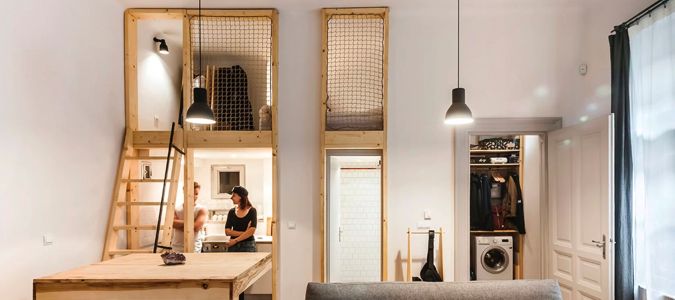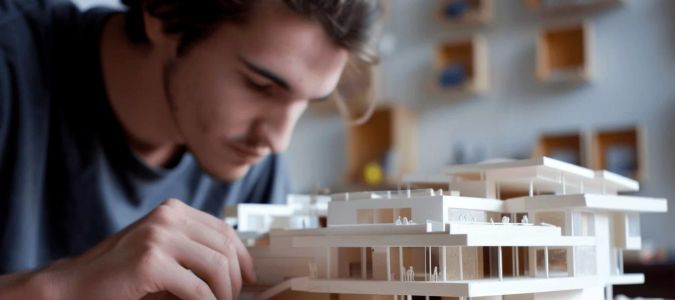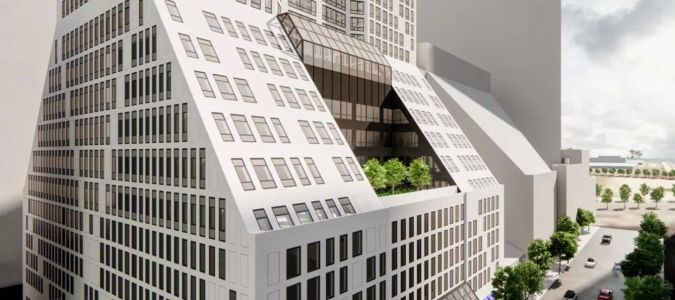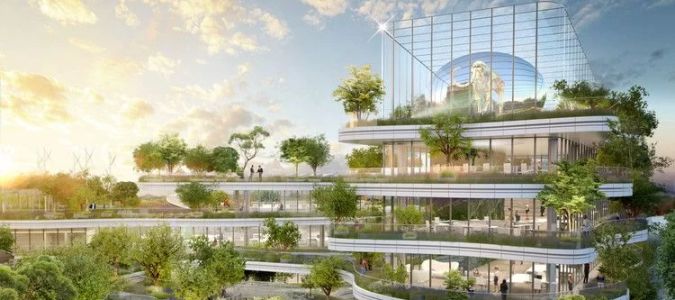Creating Spaces That Foster Collaboration with Architects
In the world of architecture and design, creating spaces that foster collaboration is one of the most important considerations. Architects play a crucial role in shaping environments that not only look stunning but also encourage teamwork and communication. Whether it's for corporate offices, educational institutions, or communal workspaces, the design of a space can significantly impact the way people interact, collaborate, and innovate. In this article, I’ll explore how architects can design spaces that encourage collaboration and creativity, and how these environments can transform the way we work and connect with one another.
1. Why Collaboration Matters in Modern Design
Collaboration is essential in any setting, but it becomes particularly important in environments where creativity and innovation are paramount. In the workplace, especially, fostering a culture of collaboration can lead to increased productivity, more creative solutions, and an overall improved work atmosphere. This is especially true in industries like tech, marketing, and design, where diverse perspectives often lead to breakthrough ideas.
For architects, understanding the psychological and social benefits of collaboration is key. Spaces that encourage open communication, teamwork, and sharing of ideas contribute not only to better outcomes but also to employee satisfaction and engagement. The design of a collaborative space can either enhance or hinder these benefits, so it’s crucial to get the design right.
2. How Architects Can Incorporate Collaboration into Their Designs
Designing spaces that foster collaboration requires a deep understanding of the people who will use the space and their specific needs. Architects must balance aesthetics with functionality to create environments that encourage both individual focus and team interaction. Here are a few key strategies architects use to achieve this balance:
- Open Floor Plans: One of the most effective ways to encourage collaboration is through open floor plans that minimize barriers between workstations. These designs make it easier for team members to communicate and share ideas without physical obstructions.
- Flexible Workspaces: Collaborative spaces should be adaptable to a variety of activities. Architects often incorporate movable furniture, partitions, and multi-purpose rooms to allow users to configure the space according to their needs.
- Breakout Areas: While open plans encourage teamwork, it’s also important to have spaces where individuals or small groups can step away from the hustle and bustle to brainstorm or focus on specific tasks. Breakout areas, equipped with comfortable seating and a creative environment, offer a retreat for concentrated work.
- Natural Light and Airflow: Natural light has been shown to improve mood and productivity. Architects can design collaborative spaces with large windows or strategically placed skylights that allow for ample natural light. Additionally, well-ventilated spaces can reduce feelings of discomfort, promoting a healthier and more comfortable environment for collaboration.
- Technological Integration: In today’s digital age, seamless access to technology is vital for collaboration. Architects often incorporate advanced tech features, such as interactive whiteboards, videoconferencing systems, and wireless charging stations, that facilitate teamwork, no matter where team members are located.
3. Case Studies: Successful Collaborative Spaces Designed by Architects
Real-world examples can provide insight into how successful architectural design can foster collaboration. Let’s take a look at some case studies of well-known collaborative spaces:
- Googleplex – Mountain View, California: The Googleplex is one of the best examples of a space designed for collaboration. The campus features open offices, plenty of common areas, and even outdoor spaces where employees can meet, work, and brainstorm. The design promotes transparency, creativity, and informal collaboration, contributing to Google’s innovative culture.
- The Living Room – IKEA (USA): IKEA has implemented a unique, collaborative design within their stores, which they call “The Living Room.” This space encourages customers to interact, share ideas, and collaborate on design solutions for their homes. The open, comfortable layout allows for an environment of creative exchange and problem-solving.
- WeWork – Various Locations: WeWork’s co-working spaces are designed to encourage interaction and collaboration between freelancers, entrepreneurs, and teams. With flexible spaces, shared amenities, and a community-focused design, WeWork’s offices are built for collaboration at every level.
4. Designing for Different Types of Collaboration
Collaboration isn't one-size-fits-all. Different teams and businesses require different types of collaborative spaces based on their work style and needs. Here are some examples of how architects design spaces to support different types of collaboration:
- Creative Teams: Designers, artists, and other creative professionals need spaces that inspire new ideas. Architects design environments with stimulating colors, flexible furniture, and areas for both solitary work and group brainstorming sessions.
- Corporate Teams: In corporate settings, architects often focus on creating spaces that promote both formal and informal collaboration. Meeting rooms, breakout spaces, and collaborative lounges allow teams to interact and innovate.
- Education Spaces: In schools and universities, collaborative spaces are designed to facilitate group projects and team-based learning. These spaces often include moveable desks, whiteboards, and areas designed for group work and peer-to-peer learning.
5. The Role of Architects in Shaping Company Culture
Architects don't just design physical spaces—they shape company culture by influencing how people interact and collaborate. A well-designed collaborative space can lead to more open communication, stronger team dynamics, and a more productive work environment. It’s important for architects to understand the company’s values and goals and align the design to support these objectives.
For instance, companies that emphasize innovation and creativity may opt for open layouts and flexible workspaces that foster spontaneity and idea-sharing. On the other hand, companies that value privacy and concentration may need to provide designated spaces for focused work while still encouraging collaboration through strategic design choices.
6. How to Get Started with Designing a Collaborative Space
If you’re considering redesigning a workspace or creating a new one that fosters collaboration, here’s how to get started:
- Consult with Experts: Reach out to architects who specialize in designing collaborative spaces. They’ll guide you in determining the best layout, furniture, and technology needed to support your goals.
- Understand Your Needs: Identify what kind of collaboration your team needs. Do you require open spaces for brainstorming, or do you need quiet areas for focused work? Understanding your needs will help guide the design process.
- Incorporate Flexibility: The best collaborative spaces are flexible. Design your space with moveable furniture and adaptable layouts that can change as your team’s needs evolve.
Creating spaces that foster collaboration is essential for driving innovation, productivity, and employee satisfaction. Architects have the power to shape these environments by designing spaces that facilitate open communication, creativity, and teamwork. If you’re ready to take the next step in creating a collaborative space for your team or business, working with an experienced architect can help bring your vision to life. Visit Pine Cliff Resort to explore options for designing innovative, collaborative spaces tailored to your needs.
SEO Title: Best Practices for Designing Collaborative Spaces with Architects SEO Keywords: creating collaborative spaces, architects for collaboration, designing collaborative workspaces, fostering teamwork, innovative workspace design SEO Description: Learn how architects design spaces that foster collaboration and innovation. Discover the best practices for creating productive and creative environments for your team.







